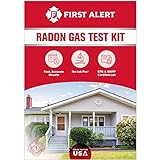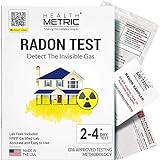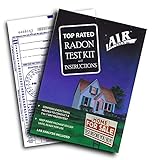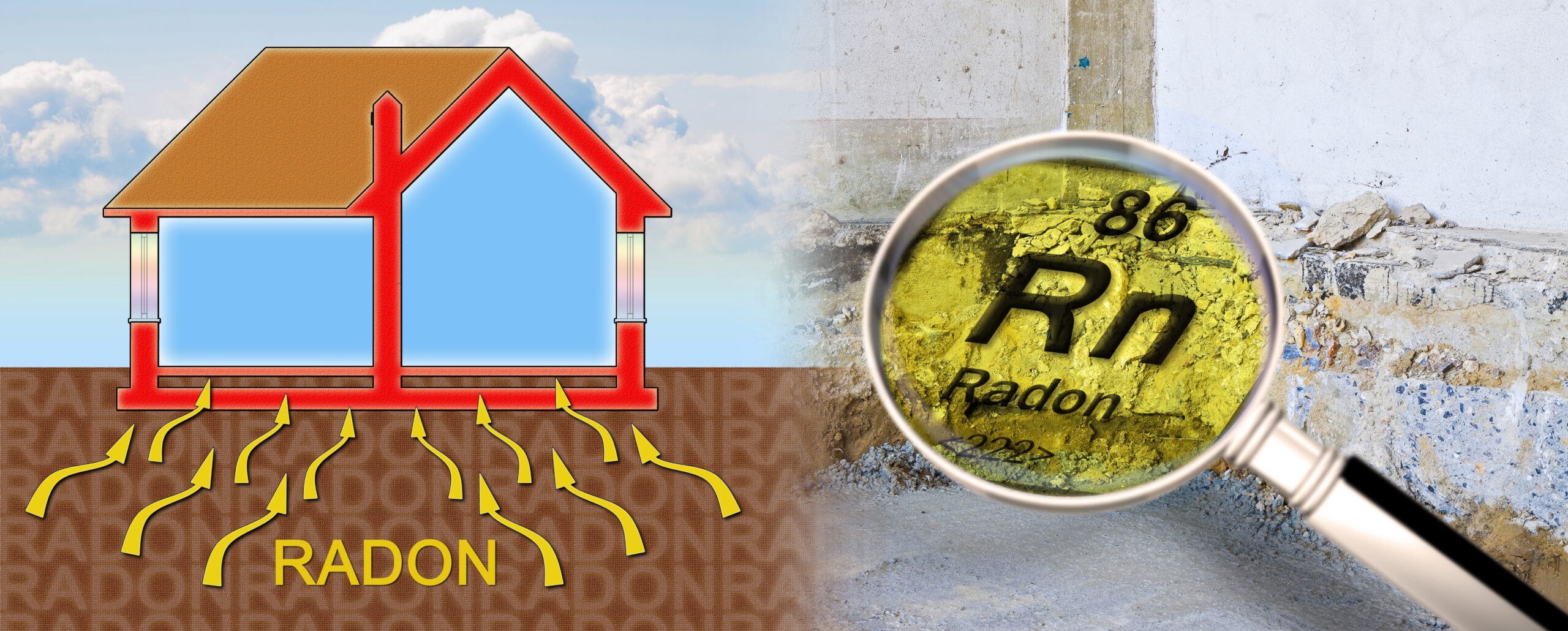Radon, a silent and invisible killer, has long been shrouded in myths and misconceptions. Many people dismiss its dangers, while others are paralyzed by unfounded fears.
In this article, we’ll debunk common radon myths, providing you with accurate, reliable information. We’ll unravel the truth about radon, its risks, and the importance of regular home testing.
So let’s demystify radon, empowering you to make informed decisions about your health and home. Welcome to the journey of discovery, where we separate fact from fiction in the world of radon.
Is Radon Really Harmful?
Radon is often misunderstood, leading to numerous myths because it’s naturally occurring. One of the most common misconceptions is that radon is harmless. However, according to the Environmental Protection Agency (EPA), radon is the second leading cause of lung cancer in the United States, following smoking.
Another myth is that you can predict radon levels based on your neighbor’s levels. This is not true, as radon levels can vary significantly from one home to another, even if they’re next to each other.
- Myth: Radon testing is expensive and time-consuming. Fact: Radon tests are relatively inexpensive, and some are even free. They are also straightforward and quick, often taking just a few days. Read our detailed review here for The Best Radon Test Kits for 2024. Here’s a summary of the review:
Rotate Your Mobile Device To see Complete Table
| OVERALL BEST | RUNNER UP | EASY-TO-USE, ACCURATE | SIMPLE AND EFFECTIVE | SHORT-TERM TESTING |
|---|---|---|---|---|
| Airthings Corentium | First Alert RD1 | Health Metric | AirChek Charcoal | AccuStar Radon |
 |
 |
 |
 |
 |
| $94.99* | $15.98* | $29.99* | $14.99* | $34.69* |
| Check Price on Amazon | Check Price on Amazon | Check Price on Amazon | Check Price on Amazon | Check Price on Amazon |
*Price at the time of this review
Some people believe that if their home is new, it’s not at risk for radon. This is not the case. Radon can seep into any home, old or new, through cracks in the foundation or other entry points.
The idea that radon is only a problem in certain parts of the country is another myth. In reality, high levels of radon have been found in homes in every state.
Finally, there’s the myth that short-term exposure to radon isn’t dangerous. While long-term exposure poses a greater risk, short-term exposure can still be harmful. Therefore, it’s essential to test for radon and mitigate any issues as soon as possible.
Can Radon be Completely Eliminated?
Contrary to popular belief, radon cannot be entirely eliminated from our environments. This naturally occurring radioactive gas is produced from the decay of uranium in soil, rocks, and water. It is an invisible, odorless, and tasteless gas that can infiltrate any space – including our homes. The key is not in complete elimination but in reducing radon levels to a safer margin.
Radon mitigation systems are effective tools in achieving this. These systems work by altering the flow of air in your home, preventing radon entry. However, it’s important to remember that even with the best mitigation systems, a small amount of radon will always be present.
Moreover, radon levels can vary from one location to another and even from one room to another. It’s a common myth that if your neighbor’s house tests low for radon, yours will too. The truth is, radon levels can be different even between adjacent houses.
Regular radon testing is crucial. The Environmental Protection Agency (EPA) recommends that homeowners conduct radon tests every two years, even if a mitigation system is in place.
- Radon is a natural part of our environment and cannot be completely eliminated.
- Radon mitigation systems can significantly reduce, but not completely remove, radon levels.
- Regular radon testing is essential for maintaining safe levels in your home.
While it’s impossible to completely eliminate radon, understanding the facts and debunking the myths can help us take effective measures to minimize its risks.
Is Radon Present Only in Certain Areas?
The belief that radon is only found in specific regions is a common misconception. In reality, radon is a naturally occurring radioactive gas that can be found in all geographic locations, including your own home. Its presence is not limited to certain areas or certain types of buildings.
Radon is produced from the natural breakdown of uranium in soil, rock, and water. It can seep into any type of building – homes, offices, schools – and result in a high indoor radon level. But remember, the radon levels vary greatly from one house to another, even if they are next to each other.
The only definitive way to know if radon is present in your home is to test for it. Testing for radon is inexpensive and easy, and it’s the only way to truly protect yourself and your family from the risks associated with radon exposure.
It’s also worth noting that radon levels can be reduced with several proven methods. From improving ventilation to installing radon reduction systems, there are many ways to mitigate radon levels.
So, to answer the question, “Is radon only in certain areas?” – No, radon can be found anywhere. It’s not about the location, but about the conditions that allow radon to enter a building and accumulate.
Does Radon Affect Only Old Buildings?
The belief that radon is a problem exclusive to old buildings is a common misconception. Radon is a naturally occurring radioactive gas that can be found in any type of building, regardless of its age. This includes houses, offices, schools, and even new constructions.
The primary factor contributing to radon levels in a building is not its age, but the presence of radon-producing materials in the soil beneath it. Every building is unique, and its radon levels depend on the interaction between the building and the soil.
In fact, new buildings can sometimes have higher radon levels because of the modern construction techniques used. These techniques can create a tighter seal, which can potentially trap radon inside.
Moreover, it’s important to note that radon levels can fluctuate over time. This means that even if a building has low radon levels now, it doesn’t guarantee that it will remain low in the future.
Here are some key points to remember:
- Radon can affect any building, regardless of its age.
- The primary factor for radon levels is the soil beneath the building, not the building’s age.
- New buildings can sometimes have higher radon levels due to modern construction techniques.
- Radon levels can fluctuate over time.
Can Radon Be Seen or Smelled?
The short and simple answer is no. Radon is a colorless, odorless, and tasteless radioactive gas. This characteristic is one of the reasons why it poses such a significant health risk, as it can accumulate in homes without anyone’s knowledge. This lack of sensory detection contributes to the many myths surrounding radon.
Remember, just because radon cannot be seen or smelled does not mean it isn’t there. Don’t let this myth prevent you from ensuring the safety of your home and family.
Is Radon Testing Expensive?
Radon testing, contrary to popular belief, is not as expensive as one might assume. It is one of the radon myths that often discourages homeowners from taking necessary precautions. The cost of radon testing can vary based on the method used and the professional hired, but it generally falls within an affordable range for most homeowners.
DIY test kits are available, which are a cost-effective option. These kits can be purchased for as low as $15 to $30. However, it’s essential to understand that these kits may not provide as accurate results as professional testing.
Professional radon testing, on the other hand, provides more accurate results. The cost can range from $150 to $750, depending on the complexity of the test and the size of the home. However, this is a small price to pay considering the health risks associated with radon exposure.
It’s important to debunk the myth that radon testing is prohibitively expensive. It is a critical measure to ensure the safety of your home and the health of your family. The cost of radon testing should be viewed as an investment in your home and health, rather than an unnecessary expense.
Remember, the cost of ignoring radon testing can be much higher, both financially and in terms of health consequences. So, don’t let the myth of high costs deter you from getting your home tested for radon.
Are all Radon Mitigation Systems the Same?”
Contrary to popular belief, not all radon mitigation systems are created equal. This is one of the most common radon myths that needs debunking. There are various types of radon mitigation systems, each designed to cater to different building structures and radon levels.
For instance, the Active Soil Depressurization (ASD) system, the most prevalent type, uses a fan to create negative pressure beneath the building, preventing radon from entering. In contrast, Passive Soil Depressurization (PSD) relies on natural air currents, without the use of a fan, to divert radon gas away from the building.
Furthermore, the effectiveness of a radon mitigation system is not solely dependent on the type of system, but also on proper installation and maintenance. A poorly installed ASD system may not reduce radon levels as effectively as a well-maintained PSD system.
In addition, radon mitigation systems need to be tailored to the specific needs of a building. Factors such as building size, construction type, and radon levels significantly influence the choice of system. Therefore, it is crucial to engage a certified radon mitigation professional to conduct a thorough assessment before installing a system.
In conclusion, the myth that all radon mitigation systems are the same is a dangerous misconception. Understanding the differences between various systems can play a vital role in ensuring effective radon mitigation and safeguarding health.
Can Radon Only Enter Through The Basement?”
It’s a common misconception that radon, a carcinogenic gas, can only infiltrate your home through the basement. However, this is just one of many radon myths debunked. In reality, radon can seep into your dwelling through any cracks and openings in the ground floor, not just the basement.
Radon gas is a byproduct of uranium decay in the soil and can easily permeate through concrete, brick, mortar, or wood. It’s not limited to entering your home through the basement alone.
- Radon can infiltrate through crawl spaces, gaps around service pipes, cavities inside walls, and even the water supply.
This myth probably originates from the fact that radon levels are usually highest in basements and ground floor rooms that are in contact with the soil. However, elevated levels can also be found in upper floors, especially if the building is not well ventilated.
A comprehensive radon test is the only reliable way to determine if your home is affected. This test measures radon levels in various parts of your house, not just the basement.
Remember, radon mitigation is essential regardless of where the gas is entering your home. Just because you don’t have a basement doesn’t mean you’re safe from the potential dangers of radon gas exposure.
Wrapping Up: Busting the Myths About Radon
So, we’ve debunked several misconceptions about radon, a naturally occurring radioactive gas. We’ve established that radon is indeed harmful, contributing to lung cancer cases. While it cannot be completely eliminated due to its natural occurrence, its levels can be significantly reduced.
We’ve also learned that radon is not limited to certain areas or old buildings only. It’s a universal issue that can affect any structure, old or new. Furthermore, radon is a silent intruder – invisible and odorless, making it even more dangerous.
The cost of radon testing varies, but the health benefits far outweigh the expense. Not all radon mitigation systems are the same, and the choice depends on the specifics of your home. Radon can enter not only through the basement but also through any opening in contact with the ground.
As we move forward, it’s crucial to stay informed about radon and its potential impact on our health. Future developments in radon detection and mitigation technologies promise to make our homes safer. Remember, knowledge is power, and debunking these radon myths is a significant step towards a healthier home environment.
Please follow Trustrowthyhomeadvice.com for more tips on homeownership. Check out out our post on Homeowner Essentials: Must Know Tips for All Homeowners!




